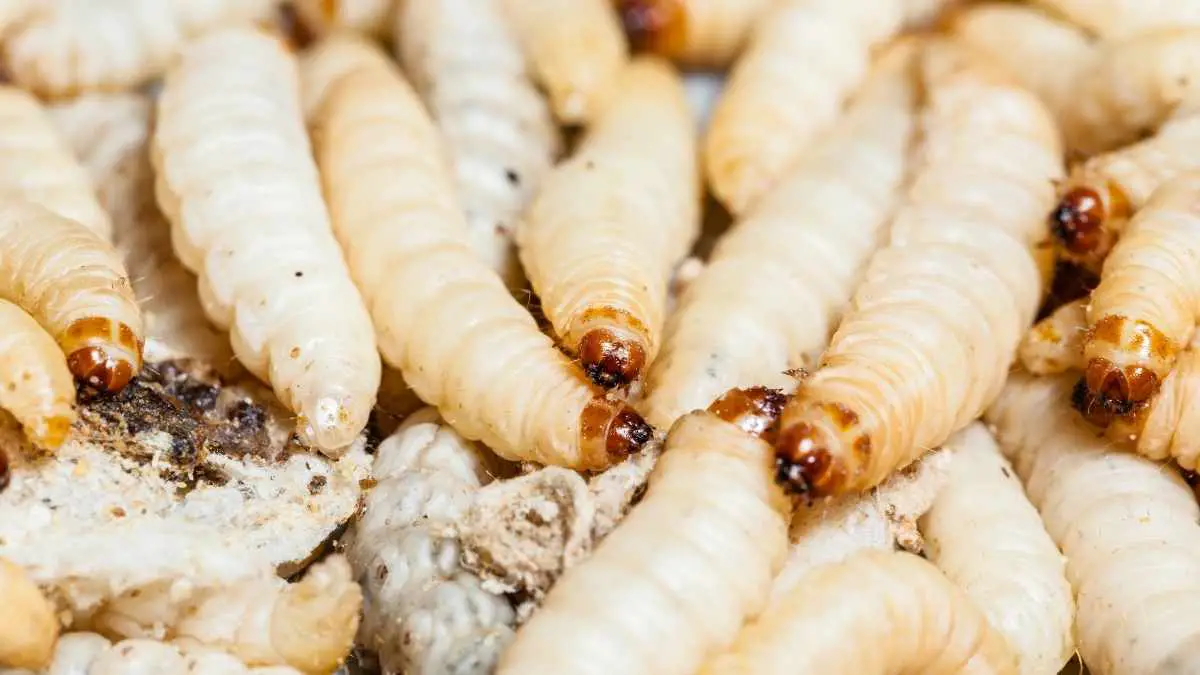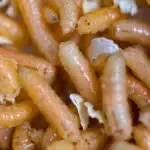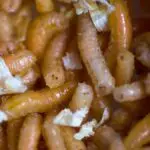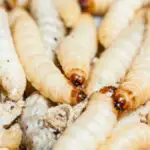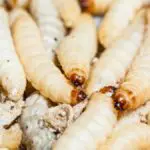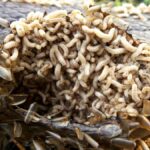If you’ve ever had a maggot infestation, you know how frustrating and disgusting it can be.
Maggots can quickly take over your home and make life a living hell.
But what can you do to get rid of them?
In this blog post, we will discuss the effectiveness of diatomaceous earth for killing maggots.
We’ll also provide some tips on using it properly to get the best results. So read on to learn more!
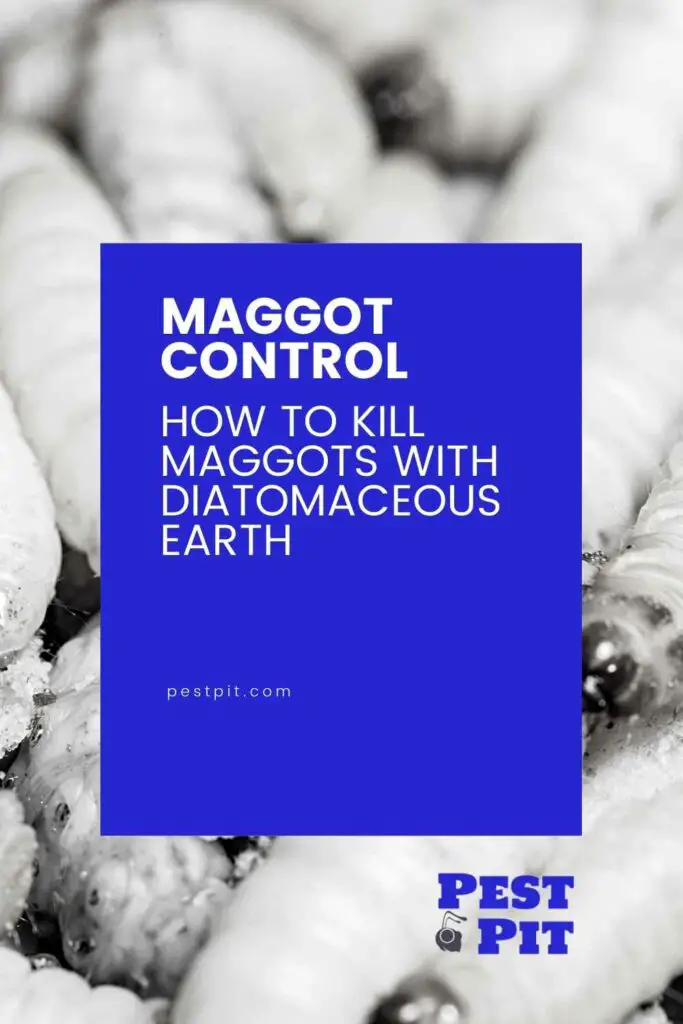
Using Diatomaceous Earth to Kill Maggots – Our Guide
What is Diatomaceous Earth?
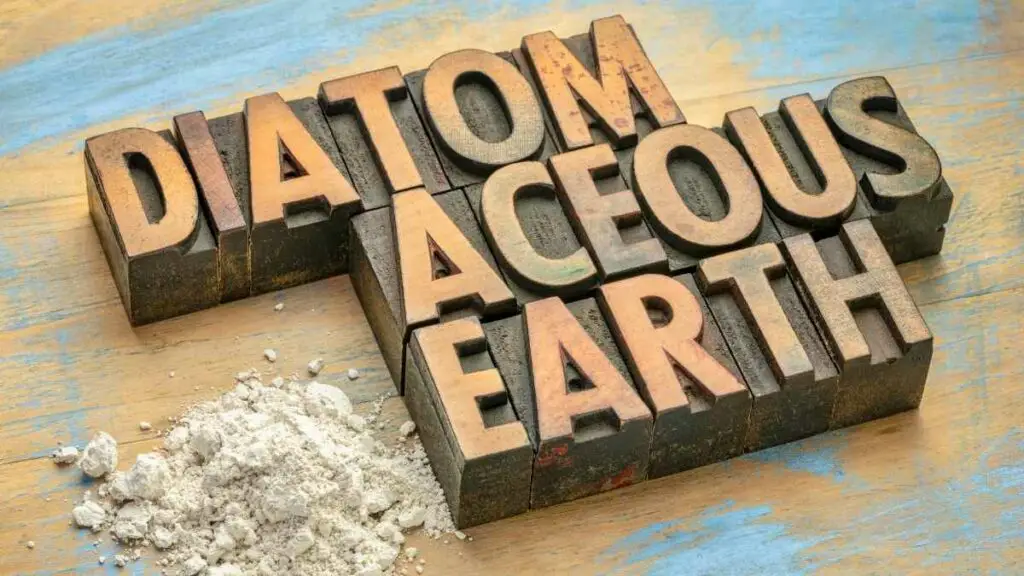
Diatomaceous earth is a natural sedimentary rock composed of the fossilized remains of diatoms, a type of algae. It has many uses, from being used as an insecticide to being used in toothpaste and other cosmetics.
One of its most popular applications is a natural way to kill maggots. When used as an insecticide, diatomaceous earth works by dehydrating and ultimately killing the insects that come into contact with it, similar to using salt to kill maggots.
This makes it an ideal method for killing maggots, as they are highly susceptible to dehydration.
What are maggots, and why are they a risk?
I am sure you know, but maggots are fly larvae found in rotting food or garbage. Flies lay eggs, and these eggs hatch and become maggots.
They can also infest animal carcasses and have the potential to cause infection and tissue damage.
Maggots will eventually turn into flies, so if you have a maggot infestation or notice your trash is infested with maggots, it is quickly followed by a fly infestation! That is another reason why it is good to get rid of maggots when you see them.
You should be checking your trash car regularly.
How does diatomaceous earth kill maggots?
Maggots can be a big problem for farmers and ranchers, as they can quickly damage livestock or crops. There are several ways to get rid of maggots, but one of the most effective is using diatomaceous earth.
Diatomaceous earth is a natural substance made up of the fossilized remains of tiny algae-like creatures called diatoms. The sharp edges of the diatomaceous earth particles cut through the exoskeletons of insects, causing them to dehydrate and die.
Diatomaceous earth is safe for humans and animals, but it is deadly to maggots. When maggots contact diatomaceous earth, it cuts through their exoskeletons, and they quickly dehydrate and die.
If you’re dealing with a maggot infestation, diatomaceous earth is a safe and effective way to get rid of them. Wear gloves and a dust mask when handling the substance, as it can irritate your lungs if you breathe it in.
What are the benefits of using diatomaceous earth to kill maggots?
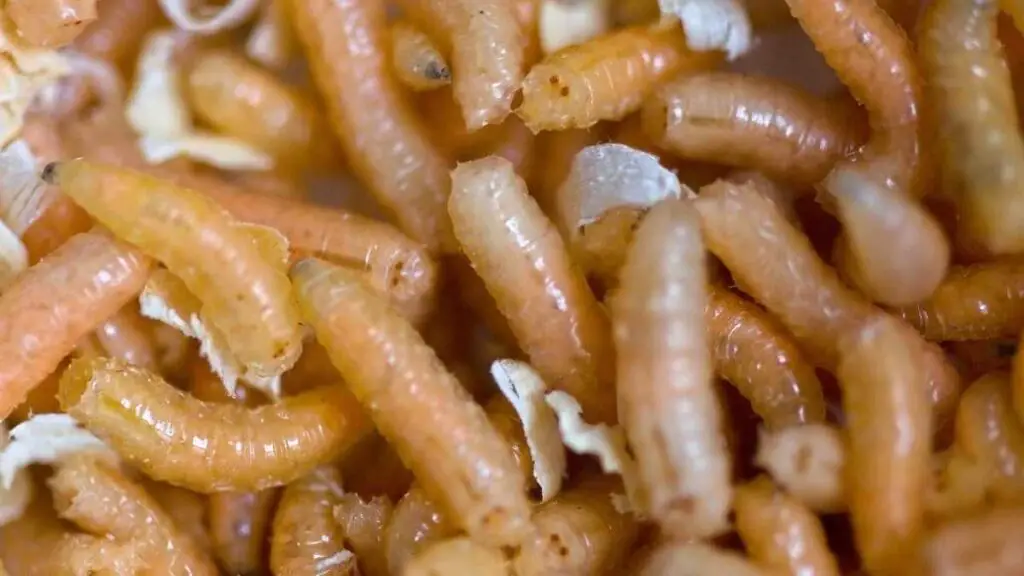
Diatomaceous earth is thought to be safe to use around humans and is even used as a diety supplement. It is also a natural desiccant, so it can help to kill maggots and prevent them from returning.
Some benefits include:
- It is safe to use
- It is very effective at killing maggots
- It is easy to source
- It is a great natural product you can use for pest control in general
If you are dealing with a maggot problem, diatomaceous earth is a safe and effective solution that can help get rid of them.
How much diatomaceous earth do you need to kill maggots?
It depends on the extent of the infestation, but you should get excellent use out of a 4lb bag of diatomaceous earth.
If you find that is not enough, you can always purchase more, but a 4lb bag is an excellent place to start.
Are there any risks associated with using diatomaceous earth for a maggot infestation?

There are few risks associated with using diatomaceous earth for pest control. One is that it can be harmful to pets and other animals if they ingest it. Another is that it can be harmful if inhaled, so it is essential to use diatomaceous earth in a well-ventilated area and wear a mask when applying it.
Finally, it is essential to keep it away from children and pets. If you follow these precautions, diatomaceous earth can be a safe and effective way to kill maggots.
How do you apply diatomaceous earth for the best results when killing maggots?
As we have discussed, diatomaceous earth is a great natural option for getting rid of maggots. DE is made up of tiny, sharp particles that cut through the exoskeleton of insects, causing dehydration and eventually death.
To use DE to kill maggots, you’ll need to apply it directly to the affected area. You can either sprinkle it on top of the maggots or create a barrier around the area with DE to keep them out.
Sprinkle diatomaceous earth on them and the surrounding area when you see maggots. That’s it!
As a reminder – be sure to wear a mask when handling DE, as it can be harmful if inhaled. With a bit of effort, you can get rid of those pesky maggots for good!
Conclusion
So, if you’re experiencing a maggot infestation and would like to get rid of them as soon as possible, try using diatomaceous earth. It’s an all-natural product that effectively kills maggots and can be used safely around your home and pets.
Remember to follow the directions carefully, wear gloves when handling it, and keep it away from children and pets.
Don’t forget to clean up the dead maggots after. Use bleach in areas where you can use it (not on materials, always check the label and adhere to the instructions). Bleach kills maggots, so you can use it alongside DE. Use is a well-ventilated area; follow the instructions on the label and always patch test if using on materials.
You should also consider other methods to kill or deter maggots (like boiling water which kills maggots instantly, or bleach). Here are some of our guides on using different ways:
- Using essential oils for maggot control
- Using salt to kill maggots
- Using vinegar to get rid of maggots
Clean regularly to stave off future infestations.
Good luck!

